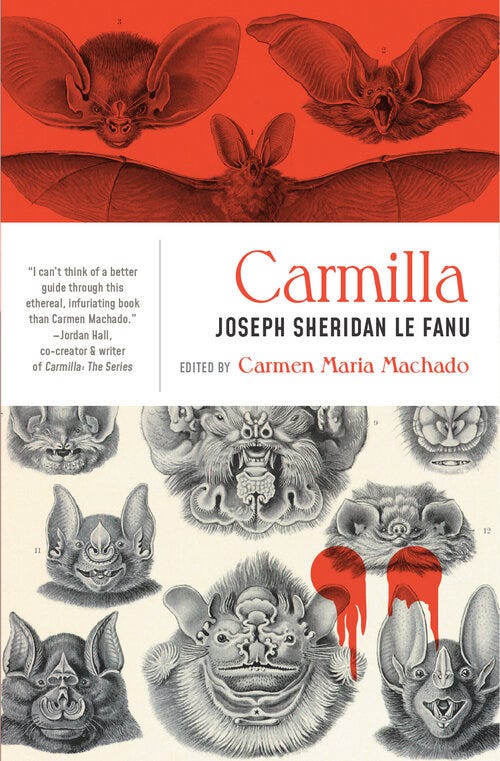Thank you so much for joining me in the Gothic Grotto, especially in time for the very first newsletter! I have fun things planned, and I can’t wait share this with you.
If you’ve heard of Gothic fiction before, but you’re not sure what it was, here is your sparknotes version before we sink our teeth into the main stuff:
The genre originated and became popular in the mid 1700s to the late 1800s, especially during the Victorian era. The name comes from the Gothic architectural style because many of the stories were set in Gothic castles.
Focuses on themes of morality, religion, power, and isolation. Usually set within a dark, gloomy setting
Commonly features a supernatural element that often (but not always) has a logical explanation
Has several subgenres or subcategories (Gothic Horror, Gothic Romance, Southern Gothic)
At its core, Gothic fiction examines humanity’s limitations through the sublime. It’s a way to evaluate the ills of society and offer critique through a gloomy atmosphere and a ghost, vampire, or cursed portrait of yourself.
Before The Queen of the Damned…
…There was Carmilla. Joseph Sheridan Le Fanu’s titular vampire pre-dates Bram Stoker’s Dracula by 26 years, having been published in 1871 and 1872. If you’re wondering why you know the name Dracula and not Carmilla, it’s likely (probably most definitely) because of the sapphic dynamic at the center of the story.
“In a lonely castle deep in the Styrian forest, Laura leads a solitary life with only her elderly father for company—until a moonlit night brings an unexpected guest to the schloss. At first Laura is glad to finally have a female companion her own age, but her strange new friend’s habits and eerie nocturnal wanderings quickly become unsettling, and soon a ghastly truth is revealed.”
Without spoiling too much more, this isn’t sapphic in a “historians say they were close friends” hidden sense. And here’s where the debate around Carmilla starts: Was Le Fanu allowing a queer relationship to blossom as the queerness itself is not presented as punishable behavior or is the metaphor for a monstrous vampire symbolic enough for the societal views on homosexuality?
A third side would be that Le Fanu used the “otherness” of vampirism to demonstrate the mistreatment and “otherness” of queer people (This feels too 21st century idealist though).

Like I mentioned in our sparknotes version of Gothic fiction history, the genre explores the limitations and ills of humanity. Was Le Fanu critiquing the ills of a homophobic society or the “ills” of being queer? Now that we’re more removed, does this intent even matter? (If you listen closely, you can hear all of my old English professors reminding me to focus on the text, not the intent).
Regardless of what Le Fanu intended (and to be clear, I think he was using vampirism to villainize queerness), his story inspired the lesbian vampire trope, which has been frequently used negatively, fetishized, and parodied. Even if Le Fanu wrote Carmilla to condemn the repressed, prudish ways of Victorian society, the legacy of his vampire has been one of hypersexuality and male fantasy.
Carmilla Re-Born
It seems thought that Carmilla is finding a new audience—one willing to truly celebrate it as a queer story without the salacious trope. KindaTV’s web series adapted Carmilla into scripted, vlog style series that deviates from the original novella, but led to three seasons, a full movie, and an avid Tumblr fandom.
Carmen Maria Machado also edited a new edition of Carmilla that fully embraces the queer relationship and acknowledges the ways in which queer people often feel the need to reclaim narratives.
And that is what I hope to do with this project. Not every novel or piece of fiction is going to be inherently or explicitly queer, but the Gothic genre (along with Horror) is a fairly queer genre as is. In sharing about Gothic fiction, I hope we can navigate these stories and tropes together, celebrate queer characters, and find joy in these beautifully weird and sublime tales!
For more Carmilla
Carmilla by Joseph Sheridan Le Fanu is available for free on Project Gutenberg
Emily Harris wrote and directed a movie adaptation by the same name. Please make sure you check content warnings as I haven’t watched the movie yet myself!




